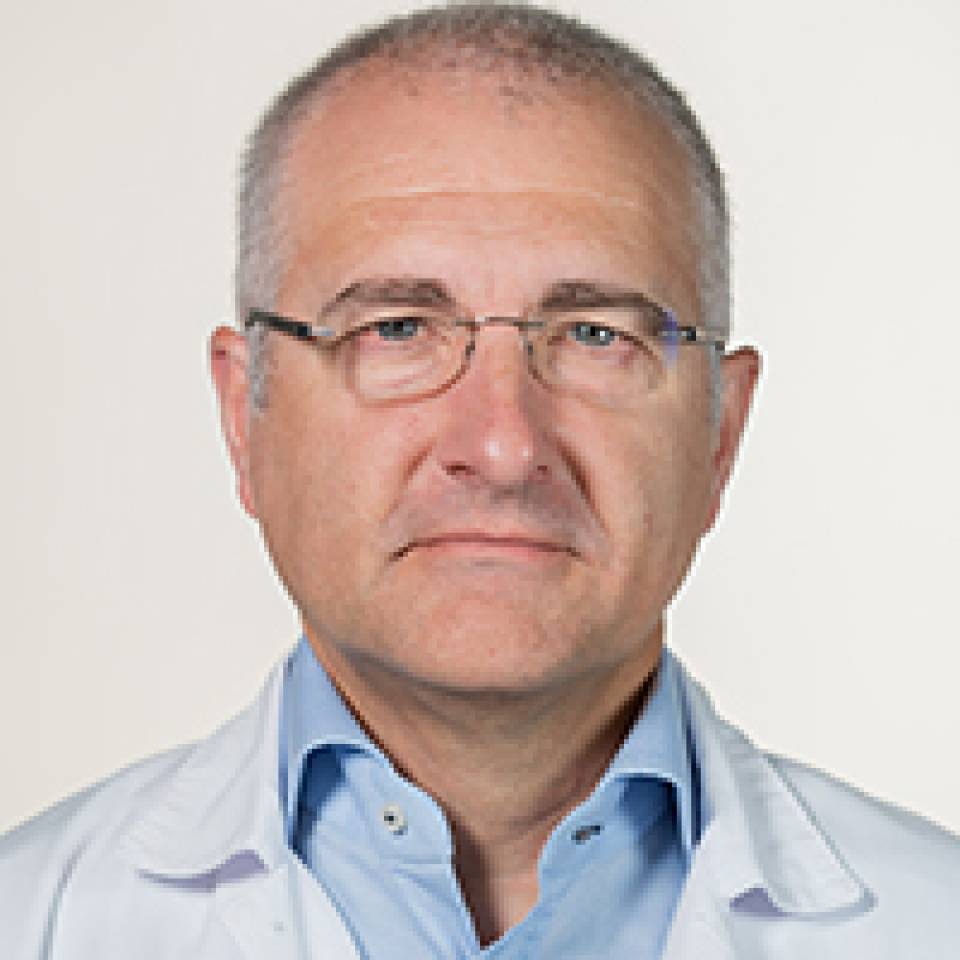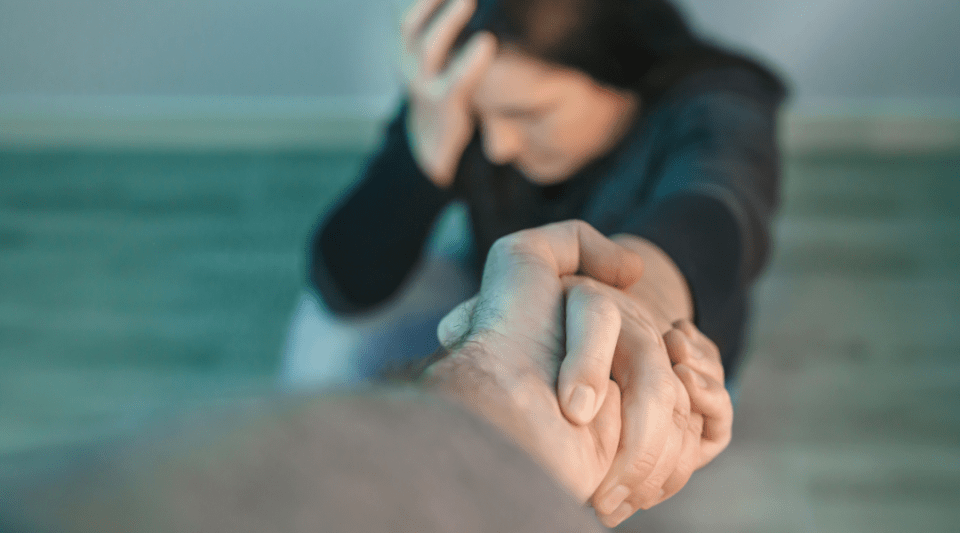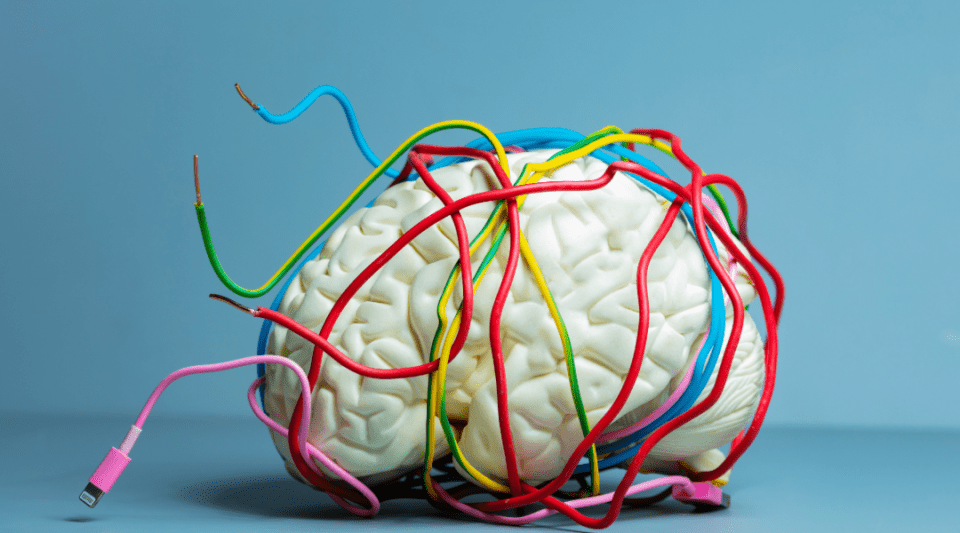1 September 2025
Treatment of depressive disorder
Treatment must be in a totally individualised form, as there are different types of disorder and symptoms that may present differently from one person to another.
The main therapeutic alternatives available are psychological and pharmacological treatment. Both are not mutually exclusive, totally the opposite, since a very large percentage of individuals affected by a depressive disorder benefit from combined psychological and pharmacological treatment.
Psychological treatment
Cognitive-behavioural psychotherapy and, to a lesser extent, interpersonal psychotherapy, have scientifically demonstrated their efficacy in the short and long-term treatment of the majority of depressive disorders.
The main objectives of psychological treatment:

Treatment of the depressive symptoms, particularly reducing behaviour and negative thoughts (focused on low self-esteem, self-criticism and a loss of hope for the future).

The learning of strategies for the early identification of the symptoms and prevention of relapses.

Promoting learning of different strategies, skills and alternative personal resources, depending on the case, to improve the ability to cope with conflicting or stressful situations in everyday life. For example, encouraging communication and assertiveness, emotional regulation strategies, anxiety management and problem-solving techniques.

Identifying and modifying dysfunctional coping strategies related to personality traits (e.g. dependence and inflexibility), which predispose one to the appearance of depressive disorder symptoms or which hinder recovery.
When the word “treatment” is used, it refers to an intervention process (in this case with psychological techniques) aimed at modifying a pathological condition or dysfunction, and thus managing to improve the state of the person that has it. Based on this definition, the support, the advice, the accompaniment, or talking, are alternatives that, by themselves, although they can be useful for the individual (for example, on their mood), are not psychological treatments.
Of what does cognitive-behavioural psychological treatment consist?
Cognitive-behavioural treatment is the therapeutic procedure aimed at identifying and modifying the cognitive processes that facilitate the appearance of dysfunctional behaviours, with the final purpose of obtaining less distorted emotions and behaviours. Obviously, the cognitive-behavioural treatment does not have to treat the temporary behaviours, cognitions and/or emotions associated with the different day to day vicissitudes as its aim. Cognitive and behavioural modification makes clinical sense when the thoughts, behaviour, or the emotions are dysfunctional, reflecting the presence of a mental disorder, or when these make it difficult for the individuals to adapt to the requirements of their affected, relational, or intellectual daily life.
It is based on the following therapeutic facts and aims:
| Fact | Therapeutic aim |
|---|---|
| Behaviours are learned and are maintained based on the same procedures. | These same procedures will be used to modify dysfunctional behaviours. |
| The environment has an important influence on the learning and maintenance of behaviours. | The intervention on the environment can modify dysfunctional behaviours. |
| The aim of psychological treatment is dysfunctional behaviour. | It is necessary to identify dysfunctional behaviour and analyse its relationship with triggering factors that could have a bearing. |
| There is a cognitive process between the environmental situation and the behaviour (thought or reasoning), for example: on looking at the clock when we arrive late, we can conclude “they will excuse me for being late” or “they will never forgive me for this error”. | It is necessary to identify the distorted cognitive process to be able to modify it. |
| The cognitive process can make uncomfortable physiological reactions appear (tachycardia, feeling of breathlessness, etc.), that intensify erroneous beliefs. | It is necessary to understand and control these uncomfortable physiological sensations. |
Altered thinking is a characteristic symptom of depressive disorder, as it derives from feelings of sadness, guilt and lack of motivation, for example; these focus on negative interpretations of personal experiences, conferring them a definitive meaning which is expanded to all circumstances. This way of thinking is called "distorted thinking" or "cognitive bias", because the person neglects other possibilities which could provide broader perspectives that modify the final meaning. These are thoughts focused on the concept of oneself, the meaning and impact of past and present events, the way of relating to them and to other people and on expectations of the future.
Persons affected by depressive disorder do not recognise such "cognitive bias errors"; in fact, their way of assessing and interpreting the present, past and future seems very reasonable to them. As a result, these cognitive patterns can influence and reinforce these emotional responses and behaviours in all areas of life.
Pharmacological treatment
Among the different drug groups that can be prescribed for a depressive disorder, the drugs called antidepressants form the main basis of pharmacological treatment.
The efficacy of this treatment is very well-demonstrated for moderate or severe cases of major depression. On the other hand, there is still not an adequate scientific basis to suggest an elevated efficacy in individuals that have a mild episode of a major depression, a dysthymia, or an adjustment disorder. Despite this, clinical experience suggests that, in determined situations, the prescribing of an antidepressant drug can be recommended in this wide sub-group of patients, in combination with psychological treatment.
As regards antidepressant drugs, a key aspect is to be aware that the antidepressant effect usually starts to be observed from the 3rd or 4th week of treatment. Likewise, it is important to mention that many antidepressant drugs are available, each one them with particular characteristics as regards effectiveness and, especially, as regards the side-effects profile.
How should antidepressant drug treatment be withdrawn?
Firstly, two aspects associated with this question must be clarified:
- It is not known if there is more risk of a relapse of a depressive disorder by the fact of suddenly withdrawing antidepressant drug treatment than by doing it gradually. That is to say, the so widely spread idea that it is essential to withdraw antidepressant treatment gradually is not demonstrated to be true.
- The antidepressant dose that must be prescribed to prevent a relapse of a depressive disorder is the same that helped to cure the depressive disorder. Thus, the so widely spread idea that once the acute symptoms of a depressive disorder have abated the antidepressant dose can be partially reduced has not been shown to be correct.
The main reason that it is advised to reduce the dose gradually, is not the possible risk of a relapse, but the attempt to avoid, where possible, the appearance of disagreeable side-effects, which are not severe, associated with the abrupt withdrawal of an antidepressant drug. The group of side-effects due to the sudden withdrawal of an antidepressant drug is called withdrawal syndrome.
Once it has been decided to withdraw the drug, the dose reduction is usually made in stages of, at least, 4 weeks. The theoretical justification for this dose reduction by stages is that the clinical effect of a determined dose is likely to be maintained for up to 3 or 4 weeks after the dose change. In this way, the reduction in stages means that between one dose reduction and the next one, there is a period of time needed to be able to evaluate whether or not there is a clinical deterioration.
Some antidepressant drugs can be withdrawn in only two stages (the dose is first is reduced to 50% and, later, the remaining 50% is withdrawn). However, what is usually done is to withdraw a determined number of milligrams in each dose reduction and, for this reason, the number of stages from the initial dose until the total withdrawal of the drug normally depends on the initially prescribed dose.
Withdrawal syndrome
Withdrawal syndrome can be observed after the withdrawal of practically any antidepressant.
Normally, it does not require any specific treatment. The symptoms are usually mild, and disappear spontaneously in a few days. However, when a patient develops a very intense withdrawal syndrome, it may be advisable to prescribe the treatment again and, one or two weeks later, start its withdrawal again, but much more gradually.
One very important idea is that the withdrawal syndrome has nothing to do with a relapse of the illness. When an antidepressant drug is withdrawn, its antidepressant and anti-anxiety effect continues for at least 3 or 4 weeks. As a result, when an antidepressant drug is withdrawn, if a relapse occurs, the symptoms of this appear from the third or fourth week without treatment. Furthermore, in the cases in which a relapse occurs, the symptoms are not those of the withdrawal syndrome but those of the baseline illness itself.
|
Characteristics of antidepressant drugs withdrawal syndrome |
|
|---|---|
| Incidence | 20% (although much depends on the specific antidepressant) |
| Start | 1st or 2nd day after the withdrawal of the drug (or after the dose reduction) |
| Duration | 1-2 weeks |
| Frequent symptoms |
Feeling of instability Dysthermic sensation Unease Gastrointestinal discomfort (nausea, diarrhoea) Paraesthesia |
Treatment complications
The type and intensity of the side effects will appear in one form or another depending on the person and the antidepressant drug.

Reduction in sexual desire and/or difficulty in achieving an orgasm. In males, it can occasionally cause difficulty in obtaining a full erection.

Gastrointestinal problems, in particular a feeling of nausea or mild oppression in the pit of the stomach.

Slight weight increase.

Dryness of mouth.

Greater tendency to dream, with sensation that the dreams are more vivid or real and remembered more.

Affective “anaesthesia”. The person explains that in situations with a marked emotional component they have a lower emotional response, with a greater capacity than usual to confront these types of situations in a more relaxed way.
All these side-effects usually appear while taking the antidepressant drug. The only exceptions are the nausea-type gastrointestinal discomforts, which usually subside within a maximum period of one week.
Contrary to the general belief, the majority of antidepressant drugs do not cause drowsiness.
Electroconvulsive treatment
Electroconvulsive treatment or electric shock is a very effective treatment for only a very small subgroup of patients affected by the depressive disorder subtype, called major depression. There is abundant clinical experience available and a bibliography of high quality that supports both its effectiveness and its safety in these patients.
It consists of the administration of an electric stimulus of short duration (2-3 seconds) in the frontotemporal area (temple). For the electroconvulsive treatment to be effective it must show that there is intense electrical activity in the brain for approximately 20-30 seconds. The treatment is performed under general anaesthetic (to prevent pain). A muscle relaxant drug is administered along with the anaesthetic, with the aim of preventing the electrical stimulus from causing an intense muscle contraction (that is to say, prevent having a motor convulsion) and thus with the maximum possible reduction in the secondary effects associated with the treatment.
In order to obtain clinical remission, between 6 and 12 electric shocks are usually required. Three electric shocks are usually performed each week on alternate days. For this reason, the treatment with electroconvulsive therapy usually lasts between 2 and 4 weeks. The improvement is usually observed from the third or fourth electric shock session.
The mechanism that makes this treatment effective is currently unknown.
Is St. John’s Wort an effective treatment of depressive disorders?
Perforate St. John’s Wort is a product obtained from the Hypericum perforatum plant. In some countries, such as Germany, it is one of the most prescribed antidepressant substances.
The information found in the literature suggests that:
- It is an antidepressant drug with the same efficacy as the classic antidepressant drugs in the acute treatment of mild to moderate depressive syndrome. Although its effectiveness in the long-term has not been demonstrated.
- It is usually very well-tolerated. Side-effects are less common than in the classic antidepressant drugs, and with the same frequency as a placebo. The most common side-effects are gastrointestinal discomforts, photosensitive skin reactions, feeling of fatigue, feeling of unease, headaches, and dry mouth.
- It can also have interactions with various frequently prescribed drugs.
- It must be prescribed with care in patients with a risk of anaemia, as it can reduce the absorption of iron in the intestine.
- In patients with bipolar disorder with a personal history it can predispose to the appearance of acute symptoms of the illness.
- It must not be prescribed to women that are pregnant or breastfeeding.
Other important aspects of the information provided in the literature about St. John’s Wort are:
- The data as regards its effectiveness are practically no-existent; for example, there are no studies available on the efficacy of St. John’s Wort in hospitalised patients in the context of a depressive disorder.
- The data of the efficacy of St. John’s Wort are particularly favourable in studies conducted by doctors in Germany (the reason is unknown).
- The older studies show better results on the efficacy of St. John’s Wort than studies carried out more recently.
Substantiated information by:


Published: 3 April 2018
Updated: 15 July 2025
Subscribe
Receive the latest updates related to this content.
(*) Mandatory fields
Thank you for subscribing!
If this is the first time you subscribe you will receive a confirmation email, check your inbox



